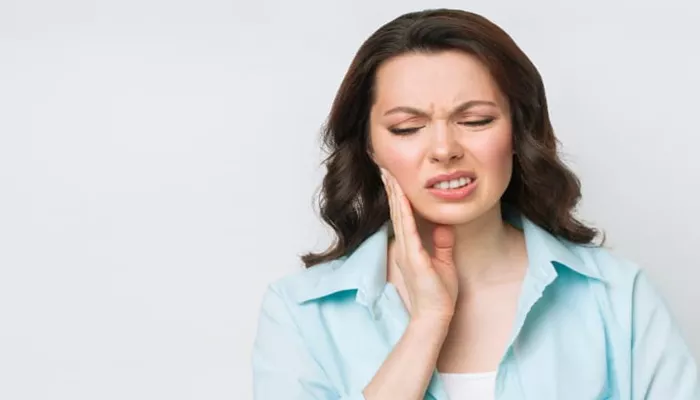Dental fillings are a common treatment for cavities, helping to restore the structure and function of teeth. However, some patients experience pain or discomfort when biting down after getting a filling. This can be frustrating and concerning.
Understanding the possible causes of this pain can help you determine whether it is normal or requires further attention from your dentist.
1. High Filling Height
A dental filling should align perfectly with your bite. If a filling is too high, it can put excessive pressure on the treated tooth when you bite down. This uneven pressure can lead to discomfort or pain. High fillings can also affect how your upper and lower teeth come together, leading to strain on the surrounding teeth and jaw.
Solution:
If you suspect your filling is too high, visit your dentist. They can adjust the filling by reshaping it to fit your natural bite better. This adjustment is a simple procedure that can provide immediate relief.
2. Pulp Inflammation or Irritation
The dental pulp, which contains nerves and blood vessels, can become irritated during the filling process. This irritation is common if the cavity was deep, close to the nerve, or required extensive drilling.
Solution:
Mild pulp irritation usually resolves on its own within a few days to a couple of weeks. Over-the-counter pain relievers and avoiding extremely hot or cold foods can help manage sensitivity. If the pain persists or worsens, consult your dentist.
3. Tooth Sensitivity After a Filling
Some patients experience temporary sensitivity in their filled tooth, especially to hot, cold, or sweet foods. This sensitivity may be due to minor nerve irritation or adjustments in the tooth structure.
Solution:
Using toothpaste for sensitive teeth and avoiding trigger foods can help. If the sensitivity does not subside within a few weeks, your dentist may need to evaluate whether another issue is causing the discomfort.
4. Cracked or Fractured Filling
A dental filling should be strong, but in some cases, it can develop small cracks or fractures. This can occur due to excessive pressure from biting, teeth grinding (bruxism), or using the teeth to chew hard foods or objects.
Solution:
A cracked filling will not heal on its own and may need to be replaced. Your dentist can examine the filling and determine whether a repair or replacement is necessary.
5. Incorrect Bite Alignment (Malocclusion)
A properly shaped filling should not interfere with the way your upper and lower teeth fit together. If the filling affects your natural bite alignment, it can cause discomfort when you chew or close your mouth.
Solution:
A simple bite adjustment by your dentist can resolve this issue. They may remove a small portion of the filling material to restore proper alignment.
6. Nerve Damage or Pulpitis
In some cases, the dental pulp may become inflamed or infected after a filling, a condition known as pulpitis. Pulpitis can occur due to deep cavities, repeated dental work, or excessive heat from drilling.
Solution:
Mild pulpitis can heal on its own, but severe cases may require a root canal treatment. If you experience persistent or severe pain, see your dentist as soon as possible.
7. Allergic Reaction to Filling Material
Some people may have an allergic reaction to certain filling materials, particularly amalgam (silver) fillings. This can cause pain, inflammation, or sensitivity.
Solution:
If you suspect an allergic reaction, your dentist can replace the filling with a different material, such as composite resin or ceramic.
8. Decay Under the Filling
Even after a filling, a tooth can still develop decay beneath the restoration. This is known as recurrent decay and can lead to pain when biting down.
Solution:
Your dentist will need to remove the affected filling, clean out the decay, and place a new filling to restore the tooth properly.
9. Teeth Grinding (Bruxism)
People who grind their teeth, especially at night, put excessive pressure on their fillings. This can cause pain, wear down the filling, or even lead to fractures over time.
Solution:
Wearing a custom-fitted nightguard can protect your fillings and reduce the pressure on your teeth while you sleep.
When to See A Dentist
While some discomfort after a filling is normal, you should see your dentist if:
- The pain lasts longer than two weeks
- The discomfort worsens over time
- You experience severe, throbbing pain
- There is visible damage to the filling
- You notice swelling or pus around the tooth
Conclusion
Pain when biting down after a filling can result from various causes, including high fillings, nerve irritation, bite misalignment, or even underlying decay. Some discomfort is normal and should resolve on its own, but persistent or severe pain requires professional evaluation. If your filling continues to hurt, schedule a visit with your dentist to identify the cause and get the appropriate treatment.

